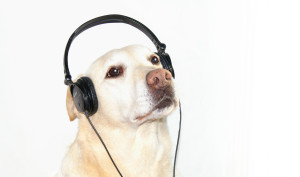Repeating Dog Training Cues – Why You Should Avoid It.
We have all been guilty, at some point, of falling into the trap of verbally repeating requests – probably just as much with small children as dogs. But, why should repeating dog training cues be avoided? Holidays4Dogs finds out.
“If I’ve said it once, I’ve said it a hundred times!”
Parents everywhere will be familiar dealing with an uncooperative small child. Likewise, many of us may remember being on the receiving end of an exasperated parent.
As parents, we tend to give our children ‘chances’. “Do that one more time and that’s it”, followed by the threat of removal of favourite toy, or perhaps time out on the naughty step.
However, how many of us have been guilty of repeating ourselves over and over again? How often during this process do we hope our child will finally stop hitting his brother over the head, or shrieking in the supermarket aisle?
Children learn that, as the decibels increase, they might have to at least pretend they are listening, but the details of the actual requests go almost unnoticed. They tune out. This is not a dissimilar scenario for our dogs.
Dogs will ‘tune out’ just the same.
It is exactly the same with dogs. And, don’t forget – dogs don’t speak our language. As owners, we frequently ask them for example, “to sit, sit, SIT!” in training sessions. Many dogs will simply tune out to verbal repetition like this.
When this happens, the dog quickly learns he doesn’t have to listen to his owner until about the third repetition.
In essence, when we repeat commands, we are teaching the dog to ignore us until the third, fourth or fifth time we ask.
The dog may become fearful by repeated verbal cues, (especially if the owner is annoyed).
Repeating cues creates a situation which is unfair to the dog. This is because he, or she, effectively learns to wait until you get annoyed before paying attention. This can often make the dog fearful and submissive because, ultimately, he is getting shouted at to do as he is told.
Matters can be made worse, because he is even less likely to comply if he is being shouted at. Worse still, the owner may then choose to use physical manipulation, grabbing his collar and pushing him into a sit, for instance.
Always set the dog up for success.
Consistency is the key to getting the best out of your dog during training sessions. It is important not to give the a  command more than once and absolutely NEVER give him a command that you are not in a position to back up.
command more than once and absolutely NEVER give him a command that you are not in a position to back up.
For example, if your dog is off-lead in full flight running away from you, it is futile to demand him to return.
However, if he is on a long line, you are able to use this to encourage him to you and prevent him from running off completely.
In addition, only give him a command that you absolutely know he fully understands. It is very unfair indeed to ask your dog to do something that he has not previously been shown how to do.
Positive reinforcement v. repeating dog training cues.
Always use positive reinforcement to help your dog understand. Use a lead during initial stages of training, so you have control the dog’s movement. Encourage and praise all the time, but don’t keep repeating the command and especially not if he does not yet understand what that means.
![]()
![]()
![]()
![]()
![]()
![]()
Repetition in terms of actions increases performance. Whereas simply repeating commands that might be meaningless to your dog, will negatively affect performance.![]()
![]()
![]()
![]()
![]()
![]()
![]()
![]()
![]()
![]()
Conclusion.
Give your dog plenty of reason to listen to you in the first place, by using plenty of tasty treats, or the prospect of a game with a toy.
Teach your dog new skills in small increments and try not to move on too quickly. Make it as easy for the dog as possible to understand what you want him, or her, to do.
For more detailed instruction on teaching your dog basic commands, follow our other Holidays4Dogs articles in the training section.



